Posts Tagged ‘smog’
New UNT Study-In-Progress Links Gas Pollution to Persistent DFW Smog
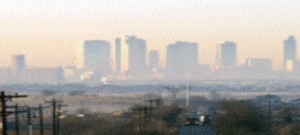 This is why it's important for citizens to have real scientific horsepower.
This is why it's important for citizens to have real scientific horsepower.
DFW has a smog problem. It's not as bad as it used to be, but it's still at unsafe and illegal levels. And for the last four or five years, the air quality progress that should have been made has been stymied. Despite almost all large sources of smog-producing pollution being reduced in volume, our running average for ozone is actually a part per billion higher than it was in 2009.
Many local activists believe this lack of progress is due to the huge volumes of smog-producing air pollution being generated by the thousands of individual natural gas sites throughout the DFW region itself, as well as upwind gas and oil plays. In 2012, a Houston-based think tank released a report showing how a single gas flare or compressor could significantly impact downwind smog levels for up to 5 mile or more. Industry and the Texas Commission on Environmental Quality say no, gas sources are not significant contributors to DFW smog. In fact, during this current round of planning, the state has gone out of its way to downplay the impact of gas pollution, including rolling back previous emission inventories and inventing new ways to estimates emissions from large facilities like compressor stations.
Into this debate steps a UNT graduate student offering a simple and eloquent scientific analysis that uses the state's own data on smog to indict the gas industry for its chronic persistence in DFW – especially in the western part of he Metromess, where Barnett Shale production is concentrated.
On Monday night Denton Record-Chronicle reporter Peggy Heinkel-Wolfe gave a summary of a presentation on local air quality she'd sat through that day at UNT:
"Graduate student Mahdi Ahmadi, working with his advisor, Dr. Kuruvilla John, downloaded the ozone air monitoring data from the Texas Commission on Environmental Quality back to 1997, a total of more than 6.5 million data points, he said, and has been studying it for the past four months.
Ahmadi wanted to explore a basic question underlying a graphic frequently distributed by the TCEQ that shows gas wells going up in DFW as ozone goes down, which suggests in a not-very-scientific-at-all way, that the increasing number of gas wells is having no effect on the ozone.
Ahmadi adjusted for meteorological conditions to determine how much ozone DFW people are making and where. Such adjustments have been explored by others to understand better the parts of ozone-making we can control, because we can’t control the weather. He used an advanced statistical method on the data, called the Kolmogorov-Zurbenko filter, to separate the effects of atmospheric parameters from human activities.
According to the results, the air monitoring sites surrounded by oil and gas production activities, generally on the west side of DFW, show worse long-term trends in ozone reduction than those located farther from wells on the east side of DFW.
His spatial analysis of the data showed that ozone distribution has been disproportionally changed and appears linked to production activities, perhaps an explanation why residents on the western side of DFW are seeing more locally produced ozone, particularly since 2008.
Ahmadi's results are not definitive, and the paper he's writing is still a work-in-progress. But he's asking the right questions, and challenging the right unproven assumptions. He's at least put forth an hypothesis and is trying to prove or disprove it. He's using science. TCEQ's approach is all faith-based.
Anything that takes the focus off vehicle pollution is anathema to Austin and many local officials who want to pretend that industrial sources of air pollution don't impact the DFW region enough to make a difference so they don't have to regulate them. If there's a guiding principle to TCEQ's approach to this new clean air plan, due in July 2015, it's to avoid any excuse for new regulations while Rick Perry is running for President. The agency isn't interested in doing any kind of science that might challenge that perspective – no matter how persuasive. After all, you're talking about a group that doesn't believe smog is bad for you. TCEQ doesn't want to know the truth. It can't handle the truth. It's got an ideology and it's stickin' to it.
So it's up to young lowly graduate students from state universities armed only with a healthy sense of scientific curiosity to step up and start suggesting that the Emperor's computer model has no clothes, and offering up alternative scenarios to explain why DFW air quality is stuck in neutral. It turns out, just doing straight-up classroom science is enough to threaten the fragile House of Computer Cards with which the state's air plan is being built.
Perhaps equally as ominous for the success fo any new clean air plan is Ahmadi's discovery that ozone levels in DFW have been during the winter time, or "off-ozone-season." There could be a new normal, higher background level of smog affecting public health almost year round.
Mahdi Ahmadi's study is just one of the many that need to be done to construct an honest clean air plan for DFW, but it shows you what a curious mind and some computing power can do. Citizens can't trust the state to do the basic science necessary as long as the current cast of characters is running the show in Austin. EPA won't step in and stop the farce as long as TCEQ can make things work out on paper. If the scientific method is going to get used to build a better DFW clean air plan, it's going to have to be citizens who apply it.
Notice Something Missing So Far This Summer? Smog Alerts.
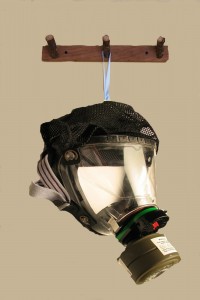 Along with cooler weather in general and a little more rain this Spring has come some relief from really dirty air in DFW.
Along with cooler weather in general and a little more rain this Spring has come some relief from really dirty air in DFW.
Last year at this time, we'd already had 6 "exceedences" of the old 1997 85 parts per billion ozone standard in May, and countless exceedences of the tougher new 75 ppb standard that is supposed to be attained by 2018. As of today, we haven't had one even one monitor reading above 85 ppb and only a handful in the 75 to 85 ppb range.
For the last two years in a row, DFW has seen a decrease in air quality, and an increase in smog. Could 2013 be the year that trend is halted?
Weather takes a lot, or even most of the credit. Cooler temperatures and more moisture are not conducive to ozone creation. But unlike during the recession, new car sales seem to be taking off the way the Rick Perry-approved engineers at the Texas Commission on Environmental Quality wanted them to two to three years ago. It's possible that the replacement of older dirtier vehicles with newer, cleaner ones by the thousands has finally made a difference you can't see. There's also the impact of cleaner operations at the Midlothian cement plants thanks to citizen victories over the last decade, (although the kilns are rapidly turning back into garbage burners), fewer coal burning plants downwind, and other improvements up and down the southeast to northwest axis that carries our predominant winds from Houston to here.
On the other hand, last June was pretty quiet until the 24th, and then all hell broke loose, with ozone levels into the triple digits. 2012 turned out to be a very bad year for safe and legal air.
And there's the unknowns that nobody's really examining closely – at least not in public. How much ozone pollution is being caused by the natural gas infrastructure in the Barnett Shale that's been built over the last decade and gets bigger every week? How much is the gas industry polluting upwind of us in places like Freestone County between here and Houston? Does the continuing boomtown growth in DFW population cancel out the improvement in individual vehicle emissions?
From a regulatory point of view, no matter how good or bad this summer is, we don't get credit for it either way. Another bad year wouldn't be held against us. Likewise, no violations this entire year wouldn't buy us any more goodwill from EPA. We're in a limbo period, where everyone is just waiting around for the average readings from 2015 -2018 to accumulate and tell us what category of compliance with the new 75 ppb standard we're in. While it would certainly help the cause if the region had some forward momentum in lowering the levels of smog going into 2015, officially, it makes no difference at all – unless you're breathing air. Then, according to EPA's own scientists, anything above 65-70 ppb is damaging to human health.
Theoretically, the TCEQ is supposed to be putting together yet another "DFW clean air plan" to reach that 75ppb standard, to be implemented sometime between now and 2015. The last time it tried to reach such a regulatory goal – the 85 ppb standard – it ended up with a plan that worsened air quality here by starting way too late and basically doing nothing but watching as new cars were going to clean up the air in the middle of a recession. (By the way, the "official" regulatory date of that failure is coming up next week even though the failure was certain last summer. Stay tuned to see if TCEQ acknowledges it in any way).
It's the summer of 2013. Any big changes that need to be in a summer of 2015 clean air plan should be being discussed and set in motion now, especially if they need 2015 state legislative approval, or lead times for industry to adapt. However, state or regional officials have yet to call a meeting of the local advisory group that's supposed to be monitoring the development of that plan. No date is set for such a meeting.
We can hope that a confluence of circumstances is making it possible to have cleaner air in DFW, but as long as Rick Perry is Governor, it's unlikely such an important public health goal will override political agendas.
Can Obama’s EPA Save Us From TCEQ’s “Clean Air Plans”?
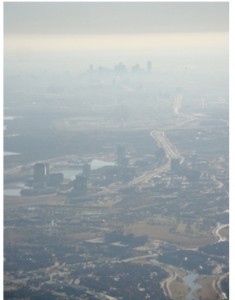 It's only a proposal, but the Obama Administration's plan to cut sulfur in gasoline is aimed primarily at drastically reducing smog-forming Nitrogen Oxide, Volatile Organic compounds and Particulate Matter, the major pollutants that causes DFW to have such bad "ozone seasons." Would it reduce it enough to finally put the region in compliance with the Clean Air Act? Good question.
It's only a proposal, but the Obama Administration's plan to cut sulfur in gasoline is aimed primarily at drastically reducing smog-forming Nitrogen Oxide, Volatile Organic compounds and Particulate Matter, the major pollutants that causes DFW to have such bad "ozone seasons." Would it reduce it enough to finally put the region in compliance with the Clean Air Act? Good question.
Sulfur content in gasoline would drop from the current standard of 30 ppm to 10 ppm by 2017 – one year before the compliance deadline for the tougher 75 parts per billion national ambient air ozone standard. That's not a coincidence. The EPA hopes that this initiative is going to drive urban ozone clean-up throughout the country, even in stubborn dirty air hot spots like DFW, which hasn't been in compliance with a smog standard since it was created over 20 years ago.
Along with new stricter emission standards for cars that have already been implemented, the pollution from cars will be coming down over the next decade to historic-per-vehicle lows. Since forever, the state of Texas and local officials have put almost all the blame for DFW's poor air quality on cars. So does this mean that we might actually have a chance to breathe safe and cleaner air, by say, 2020?
Maybe.
First, there's the question of continued growth. If per-car emissions go down, but you're importing 120,000 more cars every year into North Texas, the decreases in emissions are being canceled out to some degree. In this respect, DFW has been its own worst clean air enemy. By attracting new residents year after year and, for the most part, not creating successful transportation options other than private vehicles, the Metromess dooms itself to more total car pollution.
Then there's the climate. Everyone knows how unbearably hot it can get in DFW during July, August and September. That heat and sunlight is one reason we have a smog problem – it chemically transforms the Nitrogen Oxides (NOx) and Volatile Organic Compounds (VOCs) into ozone. What if it gets hotter, and drier? When the ground can't cool off at night and you start out with high morning temperatures that will only get worse by 5 pm, you know it's going to be a bad air day. The more days like that, the harder it's going to be to have safe and legal air despite the changes in engine design and fuel specs. So climate change could rob us of some of those automobile reductions.
If the last couple of years are any indication, you also have to wonder how much of those vehicle changes will be lost on DFW because we live in the Barnett Shale. 16,000 gas wells that are relatively short-term air polluters are being supplemented with more processing infrastructure like compressors, refineries, and pipelines that are year round polluters. Last year's Houston Advanced Research Consortium study estimated the impact of even a single compressor or flare to be as much as 3-10 ppm within five to ten miles, something it would take thousands of cars to accomplish. Even if those cars aren't there anymore, or their emissions make them less of a clean air threat, you have these decentralized major sources taking up the slack. This is one reason why the state itself told EPA that last year there was more VOC air pollution coming from oil an gas sources in North Texas than all the area's on-road cars and trucks, and a large contributing cause to why air quality has been getting worse in DFW over the last two years.
It's not just the number of these facilities but their physical location as well. The more the gas industry moves eastward, the more of the DFW core urban area is "downwind" of these sources, the more the pollution from these facilities combines with car emissions and other urban sources, and the longer they take to leave the now 10-county "non-attainment area," meaning they linger, exposed to sunlight and heat, and have more opportunity to create high levels of ozone. If you have more flares and compressors within 1 to 3 miles of one of 18 or so state air monitors – you will probably begin to see higher ozone readings as a result of their operation – as you have the last couple of years. Most of these pipelines and processing facilities have come online only since 2006.
And that's just in the North Texas area. There's evidence to suggest that the gas industry's building-out to the southeast – or upwind – of DFW is also affecting our air quality. In the same way that Houston's air pollution is said to make our initial "background" ozone levels higher, so too the 60-100 compressors in Freestone County, about 90 miles southeast of Dallas also feed their under-regulated "Standard Permit" pollution into the DFW urban mix. As does the Haynesville Shale gas play itself, as do the remaining east and central Texas coal plants and so forth. If sources to the south and east continue to increase their emissions, it means DFW starts from further and further behind, so that even if cars get cleaner, they might not get so clean so fast as to compensate for this imbalance.
Then there's the "fire hose" effect of the three Midlothian cement plants sitting so close to one another as to create one large super plume that's usually pointed toward the DFW urban core most of "ozone season." Because of citizen efforts, those cement kilns are substantially cleaner in 2013 than they were as recently as 2008. All but one wet kiln is closed, and that one is due to shut down next year. None are burning hazardous waste. But they're still the largest stationary sources of pollution in North Texas – including emitting copious amounts of NOx and VOCs – and they can still impact monitor readings miles and miles away. It's unclear what impact the burning of newly-permitted "non-hazardous" industrial wastes like car parts and plastics in the Midlothian kilns will have on the formation of smog-forming pollution.
EPA estimates an 80% drop in VOC and NOX pollution from cars as a result of its new low-sulfur fuel rule. That's steep. Remove that amount of pollution from all DFW's cars and trucks, and you'd expect to see a substantial improvement in air quality. That's what you'd expect. But, depending on a lot of other variables the state and federal government may or may not be interested in fixing, it could take more than this proposal to bring DFW into compliance with the new 75 ppb ozone standard that is now the federal definition of safe and legal air.
State Budget Writers Vote to Keep Raiding Anti-Smog Funds
 Today brings news of the first skirmish in this year's state Legislative session over using anti-smog funds collected in DFW and other EPA "non-attainment" areas to ease budget gaps in general revenue.
Today brings news of the first skirmish in this year's state Legislative session over using anti-smog funds collected in DFW and other EPA "non-attainment" areas to ease budget gaps in general revenue.
The Dallas Morning News has an account of local Dallas State Representative Helen Giddings teaming up with Houston Rep. Turner Sylvester during a House Appropriations Committeee meeting on Tuesday to make the case that the funds are desperately needed to help reduce air pollution in Texas' largest cities where unhealthy air is still the norm during "ozone season."
Everyone who gets their car inspected in North Texas pays an extra $6 that goes to the "Low-Income Repair and Replacement Assistance Program," (LIRAP). The money is supposed to be used to help low-income car owners upgrade their vehicles so they'll run cleaner. Because they can't afford to buy new vehicles as often, low income owners usually drive older cars. Older cars are dirtier cars. Fix them or upgrade them to newer cars and you reduce air pollution.
According to the folks that wear the green shades, the LIRAP fund will have approximately $77 million in unspent money at the end of August. Another $80 million is expected to be collected in the state's "non-attainment areas" over the next two years. That's a lot of car repair money. But as it turns out, state budget writers are proposing to only spend a little over $11 million in the next two years to be split up between Houston, DFW, Austin and San Antonio.
The size of the diversion has publicly angered elected officials in DFW and the other urban areas who are facing compliance with a new, stricter EPA smog standard by 2018 even as they annually fail to meet the old standard. In DFW and Houston LIRAP funding is traditionally used to build the clean air plans that must get approved by EPA. Without sufficient funds, local officials are telling the state that its next plan, due in 2015, might not get approved by EPA. You can imagine the disappointment in Austin of hearing that news.
Austin and San Antonio officials have actually threatened to pull out of the fee system all together unless they get more back of what their residents are putting in. That huffing and puffing paid off a bit Tuesday, as the Republican-led committee voted to approve an additional, but token, $1.4 million to those cities. Still, perhaps that lesson will not be lost on DFW officials, who have a long history of suffering silently as the state increasingly robs the region of its ability to control it's own air quality fate.
This was only the opening round of votes, and the House is more conservative than the Senate. But it's probably not a good sign that Rep. Giddings was the only one of at least five DFW-based members of the House Appropriations Committee quoted in News as leading the charge. Missing in Action was former Arlington City Council member and previous sometime-clean air supporter Diane Patrick, and oh yeah, the Chair of the Committee that hails from non-attainment Ellis County, Representative Jim Pitts. If the local North Texas clean air establishment can't get more help from its own players in the Lege, they're unlikely to see more money flowing their way.
Study: Gas Drilling Cause of Wintertime Smog in Utah Basin
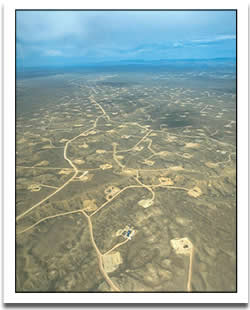 98 to 99 percent of the Volatile Organic Compounds (VOCs) and 57 to 61 percent of the Nitrogen Oxide (NOx) found in Utah's Uninta's Basin are emitted by gas drilling or production sources, and are responsible for worsening smog there, according to a new Utah Department of Environmental Quality study of air quality there.
98 to 99 percent of the Volatile Organic Compounds (VOCs) and 57 to 61 percent of the Nitrogen Oxide (NOx) found in Utah's Uninta's Basin are emitted by gas drilling or production sources, and are responsible for worsening smog there, according to a new Utah Department of Environmental Quality study of air quality there.
The Basin is one of several large rural Western areas of the country that also includes stretches of Colorado and Wyoming where gas drilling has caused the phenomena of "wintertime ozone," creating smog as bad or worse than Los Anageles or Houston.
Despite low snowfall this year, the Basin has still seen more than a dozen episodes of high ozone so far. The ozone readings can reach nearly twice the limit considered safe by the EPA and last for weeks at a time. In 2011, levels reached 139 parts per billion, nearly double the federal health standard. About 1,100 wells were drilled that year.
Leaks from pipes and tanks and fumes from pumps, dryers and compressors were major sources of volatile organics. Drill rigs and fracking were sources of nitrogen oxides and methane, according to the study.
While making no recommendations,the report did say that reductions in certain kinds of volatile organic compounds, including benzene and toluene, “could be particularly effective since they are not only a direct health concern but are more active in ozone production than many other” VOCs.
Cuts in Methane and PM Pollution Can Slow Climate Change
 In an opinion piece in The Daily Climate, Michael MacCraken, the chief scientist for the DC-based Climate Institute advocates an end-run strategy to avoid the political logjam over large CO2 cuts as a way to fight global warming. He suggests concentrating on reducing Methane and Particulate Matter pollution as a way to "appreciably slow the rate of warming over the next several decades." He cites an earlier UN study that concluded:
In an opinion piece in The Daily Climate, Michael MacCraken, the chief scientist for the DC-based Climate Institute advocates an end-run strategy to avoid the political logjam over large CO2 cuts as a way to fight global warming. He suggests concentrating on reducing Methane and Particulate Matter pollution as a way to "appreciably slow the rate of warming over the next several decades." He cites an earlier UN study that concluded:
"…a moderately aggressive international emissions control program focused on the short-lived compounds could roughly halve the projected warming between the present and 2050. While slowing the warming through this approach might seem to also offer additional time for cutting CO2 emissions, this is not the case. Instead, these actions are more appropriately viewed as partially making up for earlier policy delays.
For the United States to do its share, aggressive limits on CO2 emissions must be complemented by aggressive limits of emissions of short-lived species. In particular, the Environmental Protection Agency will need to be more aggressive in cutting short-lived emissions, particularly of methane from the oil and gas industry, and making its voluntary methane and black carbon programs mandatory.
With climate change so far along, the question now is no longer whether impacts can be avoided, but rather how bad they will become. What we do with respect to both mitigation and adaptation will control that outcome. The longer we wait, the worse the impacts and sharper the required energy transition."
While methane gradually breaks down in the atmosphere, forming carbon dioxide, it has 100 times the warming potential of carbon dioxide for the first 20 years it’s exposed to the environment. A study by Cornell University Environmental Biology Professor Robert Howarth found between four and eight percent of the methane produced by a fracking well is leaked into the atmosphere during the well’s lifetime. For all the immediate environmental benefits of natural gas, the methods used for its extraction could create a larger greenhouse footprint than oil or coal over time.
EPA is considering a new national PM pollution standard because of its public health impacts and should use the opportunity to win deeper cuts that offer so many "co-benefits." Every reduction in soot is now doubly important. Cars, cement kilns, coal plants, and just about any industrial boiler or furnace spews out PM. They all need to be targeted as part of a larger effort to bring this kind of pollution under better control.
This impact on global warming is also one more reason why Dallas residents should be demanding that the city incorporate some kind of "off-sets" policy regarding new oil and gas air pollution as part of a new City drilling ordinance. Not only can it hep reduce smog and some of the toxins released by the drilling and processing of natural gas; it can also provide some needed help for climate change at a time when the city is just squeaking by its own greenhouse gas reduction goals.
An Idea Worthy of Our Consideration
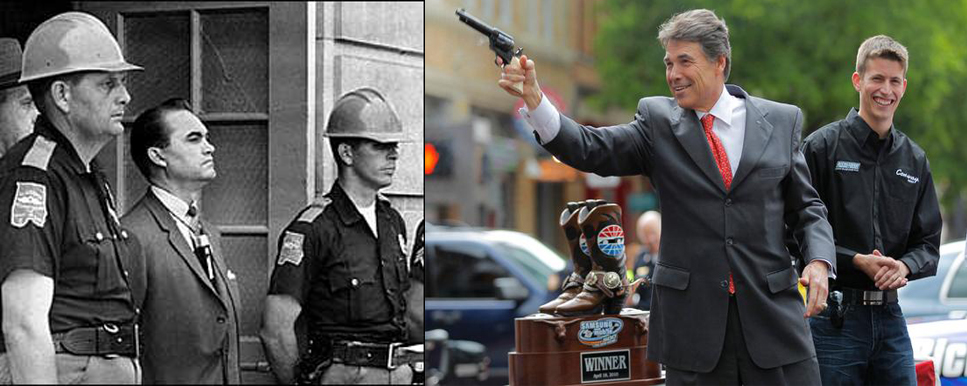 Under current law, EPA can designate states to enforce federal environmental laws if they, in fact, actually enforce the law and run competent programs. Once given by the EPA, rarely is this power taken away from a state.
Under current law, EPA can designate states to enforce federal environmental laws if they, in fact, actually enforce the law and run competent programs. Once given by the EPA, rarely is this power taken away from a state.
But when a state doesn't do a good job of enforcing the law or runs a program ineptly, the EPA considers taking back responsibility.That's happened recently in Iowa with the enforcement of the Clean Water Act. The Iowa Department of Natural Resources had been heavily criticized by state environmental groups for allowing huge CAFOs – Concentrated Animal and Feeding Operations to pollute the state's waterways. Beginning five years ago, they petitioned the EPA to take direct control of enforcing the Clean Water Act in Iowa. Their petition prompted an EPA investigation. The results confirmed the criticisms of the environmentalists and now the EPA is seriously thinking about stepping in.
Texas environmental groups should take note.
There is plenty of evidence on the public record to suggest Governor Perry and his Texas Commission on Environmental Quality are engaged in an active campaign of "nullification" of federal environmental laws just as Alabama Governor George Wallace was intent on negating federal civil rights legislation and rulings in the 1960's. But instead of standing in the schoolhouse door, Perry is using the world's second largest environmental agency to slow and obfuscate enforcement of the law in the name of his own over-the-top pro-industry agenda. The penalty for this kind of behavior 50 years ago was having the National Guard and Federal Marshals come into Alabama and make sure the law was followed. All we need in 2012 is for EPA to re-establish competent control over half a dozen federal environmental laws.
And if you don't think our Governor and his environmental agency are so nefarious as to construct a strategy to frustrate federal environmental law enforcement, what about stripping them of their responsibilities strictly because of their incompetence at administrating the federal programs. Take the last DFW air plan.…please. TCEQ kept insisting that the turnover of new cars on the road would almost singe-handedly produce the cleanest air in 25 years in North Texas. Not only was that forecast epically wrong – and off by a larger margin than the TCEQ's last clean air plan failure in 2007 – the plan actually left the region with dirtier air than when it began. It was bad science. Call this incompetence or call it incompetence by design. Either way, the result is the same. The Clean Air Act is not being effectively enforced by the state of Texas.
There are excellent reasons to believe that as long as Governor Perry and his TCEQ acolytes are making the decisions, DFW residents won't be able to breathe safe and legal air. It was obvious to many observers that needed pollution controls for industry didn't get included in the state's 2011 air plan for DFW because it would hinder the Governor's ability to raise money from this sector and it might appear to contradict his anti-regulatory political message. Rumor has it that Perry will run for Governor again in 2014 in order to re-position himself for another try at the Presidency in 2016. DFW's next clean air plan is due from the Perry TCEQ in….2015. As long as Perry has ambitions for higher office, your lungs are doomed
Along with trying to mobilize public opinion and rally local officials, maybe one thing DFW residents should be doing by way of self-defense is preparing a petition to EPA requesting it take over Texas' enforcement of the Clean Air Act.
All You need to Know About TCEQ’s Commitment to Clean Air
TCEQ Can’t Handle the Truth Over DFW Air Plan Failure
 Here's further proof that Governor Perry has transformed the world's second-largest environmental agency into just another extension of his on-going political campaign.
Here's further proof that Governor Perry has transformed the world's second-largest environmental agency into just another extension of his on-going political campaign.
After waiting for a couple of days for the Texas Commission on Environmental Quality to say something about the failure of its latest DFW clean air plan to reach a 1997 ozone standard by the end of this "ozone season," Downwinders put out a release on Monday criticizing the agency for leaving the air dirtier than when the plan was begun in 2010.
To succeed, the TCEQ plan had to bring smog numbers down at all DFW monitors to 84 parts per billion or below by the end of this last summer, using three-year rolling averages incorporating readings from 2011 and 2010. The agency blithely predicted it would do just that and even published computer-modeled estimates of what the averages would be at the end of 2012. According to TCEQ we were supposed to see record low ozone levels this summer. So low that there would be no violations of the 1997 ozone standard for the first time since it was implemented.
Although the official EPA regulatory deadline to judge the plan a success or failure is June 15th, 2013, it's fate has already been decided by the data collected the three previous summers. That's important to know. TCEQ doesn't get another summer to prove that it's brilliant plan to sit back and watch people buy cars will work somehow, someway. The Clean Air Act only allows them three years to get their act together per plan. The clock started ticking in 2010. It stopped ticking on November 1, 2012, at the traditional end of DFW's ozone season. That was the practical deadline. All that's left to do is type up the report to EPA and submit it come June 15th of next year. They've run of of time.
But unless you've gone through this process before, or had been following the plan closely, you wouldn't necessarily know this. That was the case with Andrew McLemore, a reporter for the Fort Worth Weekly, who'd been assigned to follow up on the Downwinders release and e-mail the TCEQ for a response.
 What TCEQ spokesperson Lisa Wheeler said to McLemore was that of course the agency never claimed to be able to meet the goal by 2012. We said we'd do it by June of 2013 – the regulatory deadline. Ohhhhh.
What TCEQ spokesperson Lisa Wheeler said to McLemore was that of course the agency never claimed to be able to meet the goal by 2012. We said we'd do it by June of 2013 – the regulatory deadline. Ohhhhh.
This is a great answer for a term paper that's late, but not so much when there's no more summers between now and June of next year to use in your clean air plan. Ozone data for November to June isn't going to do you any good because (unless global warming really accelerates) that's not the time of year we see high ozone numbers. And the plan has to use the highest of the high numbers. Telling McLemore that everyone had to wait until June to know the final results of the DFW air plan was like telling him to wait for the cake to cool for eight months after its' already been taken out of the oven. The thing is done. It's not getting any bigger, or sweeter-tasting, or rounder. It's not changing character or content. It is what it is right now.
TCEQ knows this. Lisa Wheeler knows that there will be no new numbers to add or subtract from that will make any difference. There will be no 2013 average that they can use to change the results from what they are at this moment. It's all already been determined by this summer's miserable showing, and the miserable showing before that in 2011. That's what makes this answer of theirs so incredibly cynical.
Wheeler apparently wanted to confuse McLemore, in essence saying, "Gee we really didn't fail yet – you have to wait until next June to conclude that. We still have time to change the outcome! " But because the data won't change, the results won't change either.
Don't take our word for it. TCEQ has a whole web page devoted to chronicling the proof that the DFW air plan has already failed – http://www.tceq.state.tx.us/cgi-bin/compliance/monops/8hr_attainment.pl
You'll notice this page, titled "Compliance with Eight-Hour Ozone Standard" has only three columns of data, one for 2010, one for 2011, and one for 2012. No column for 2013. You'll also notice that at the end of that three year cycle, there are two sites with running average that are at or above 85 ppb. The results are in. TCEQ's second clean air plan for DFW to reach the old 1997 standard in the last four years has failed. TCEQ just can't man-up and say so.
Not only has it failed. It's actually left DFW air dirtier than when it began. Here's why:
– Two monitors now have a three year running average (design value) of 85ppb or more. This is the same number as 2010, so no change at all on that front.
– The three year average for the region's highest reading actually went up 1 ppb from 2010 (86 ppb), to 2012 (87 ppb), with a spike of 90 ppb last year. Worse than 2010.
– Six monitors saw a violation of the 85 standard this summer by posting a 4th highest reading that was 85 ppb or above. Only one monitor did that in 2010. 2012 is five times worse than 2010 by this measuring stick.
– The location of those violating monitors is of concern because they moved further east from the northwestern corner of Tarrant County where they'd been "contained" – all the way into central Dallas, where the "Hinton St. monitor" near Mockingbird and I-35 recorded a 4th highest reading of 85 ppb or above for the first time since 2005. Also proof things have gotten worse, not better.
So the latest TCEQ DFW clean air plan achieved the following: More numerous and geographically-dispersed violations, with an increase in average levels of air pollution that takes it further away from the 84 it needs to achieve, instead of bringing it closer.
Heckava job.
To fully appreciate the agency's mendacity in its public approach to this failure, all you have to do is ask yourself how TCEQ would have reacted had it somehow achieved the miraculous decrease in air pollution its clean air plan promised. Go look at the front page of the TCEQ website. It has almost as many diatribes against the EPA as it does real environmental policy news, including opinion pieces written by TCEQ Commissioners. Do you think the agency would have waited until June 15th, 2013 to trumpet its success just because of a meaningless, bureaucratic deadline? Neither do we.
The TCEQ is never going to be a trustworthy source of information or expertise in the fight against DFW smog again while Governor Perry is in office. The sooner local officials wise-up and chart their own path, the better.
2nd TCEQ Clean Air Plan in Four Years Fails, Leaves Air Dirtier
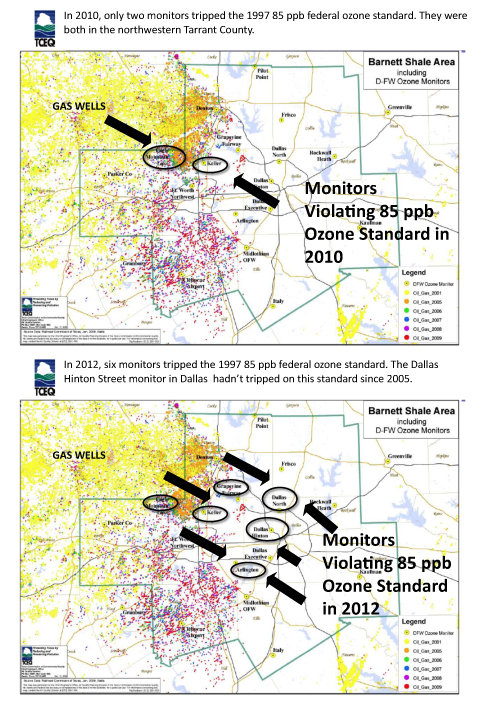 For the second time in four years a state-designed clean air plan to bring safe and legal air to DFW residents has failed, missing its goal by an even wider margin than on its first try, and leaving local air quality worse than when it started.
For the second time in four years a state-designed clean air plan to bring safe and legal air to DFW residents has failed, missing its goal by an even wider margin than on its first try, and leaving local air quality worse than when it started.
November 1st marked the official end of the eight-month 2012 ozone season. According to the Texas Commission on Environmental Quality, or TCEQ, its plan was supposed to deliver record-breaking clean air to DFW this summer on its way to bringing the region into compliance with the Clean Air Act for the first time in two decades.

